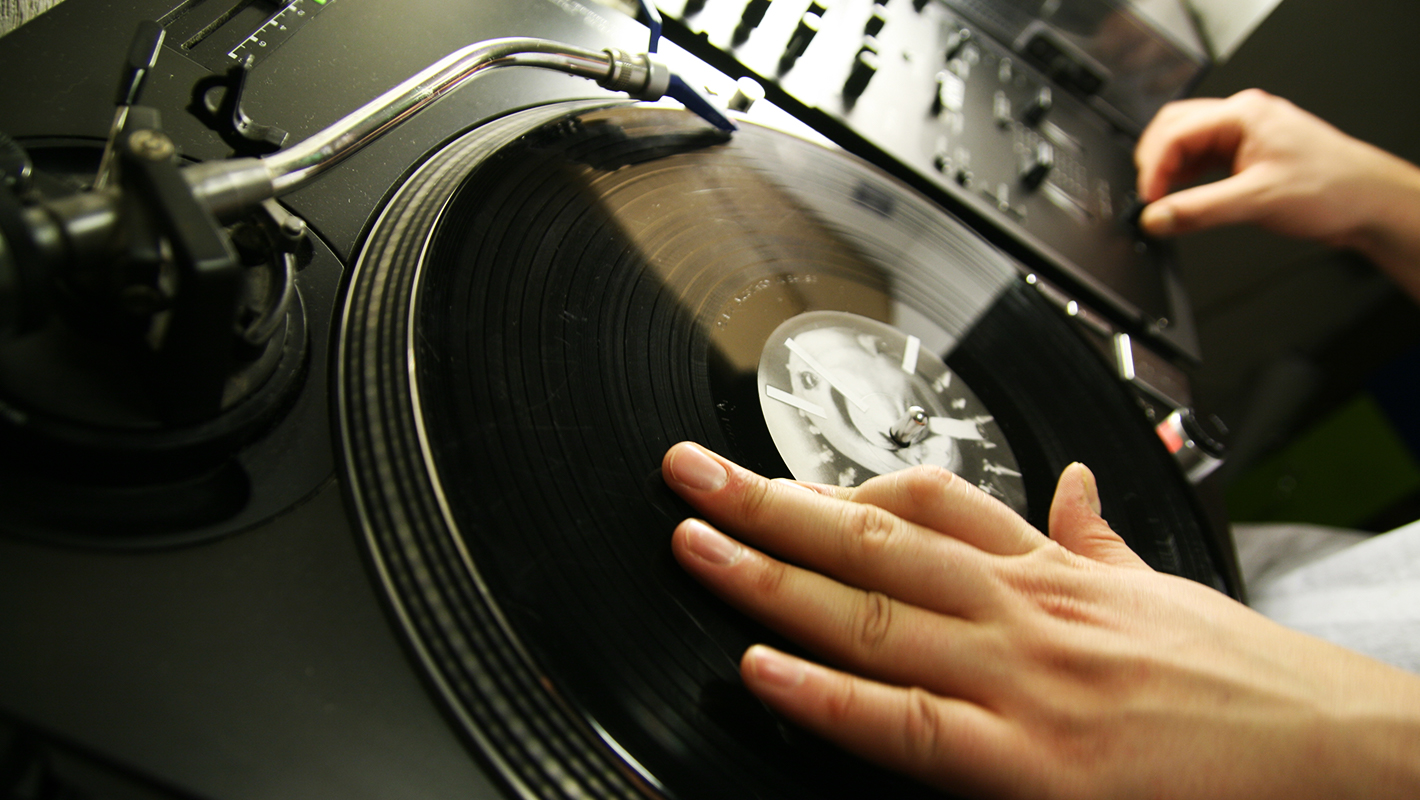
Updated September 30, 2021
If you are dying to learn how to scratch like the pros then check out these ten common scratch techniques that are suitable for beginners. They say that you have to practice everyday for a year to be ready, so prepare for a lot of hand and wrist exercise. The following videos were selected from YouTube on the basis of length and production value. You will need the usual scratch DJ gear, which includes headphones or speakers, two turntables and a mixer, plus a cartridge and stylus (record needle). Scratch DJs also need scratch vinyl (unless they don’t mind carving up their personal record collection) as well as music to scratch over. It’s usually easier to start with instrumentals.
Optionally, you may wish to acquire interesting samples, an amplifier, and of course DJ stickers for your music gear.
Baby Scratch
The easiest and most basic scratch technique is the baby scratch, which is a simple wrist motion that goes back and forth. You will use this movement a lot during routines.
Forward Scratch
During a forward scratch you close the crossfader while turning the scratch vinyl backwards. This is a type of baby scratch.
Backward Scratch
Another kind of baby scratch is the backward scratch, in which the crossfader remains shut while the vinyl goes forward. This video is in French but scratching is universal.
Scribble Scratch
The scribble scratch consists of several scratches in quick succession, without using the crossfader. It takes a lot of precision.
Tear Scratch
After mastering the baby scratch move on to tears. Use a pushing and pulling motion to stop and start the platter “tearing” the audio into more than one piece. Look it’s DJ Q-bert!
Chirp Scratch
Alternatively known as a Twitter scratch, chirps involves coordinating the fader with a forward scratch to produce a birdlike sound. It also works with backwards scratches.
Transformer Scratch
This technique is named after the “wah-wah” sound transformers make when they change forms. It involves moving the crossfader back and forth as you turn the platter.
Flare Scratch
Moving the fader in rapid motion from side to side in order to chop up the audio. This makes a clicking noise, hence there are one-click, two-click or three-click flare scratches.
Orbit Scratch
The orbit scratch is basically a speedy succession of flare scratches. Technically any repetition of forward and back scratches is an orbit scratch.
Backspins
Backspins are often called spin backs, reloops or repeat scratches. Cue up the same part of a song on both sides and then crossfade them to create a looping effect.
Despite what everyone says, there is more to becoming a real DJ than just pressing play. Once you master these tricks you will have a genuine skill that you can use to impress other scratch DJs as well as old school hip hop enthusiasts.

